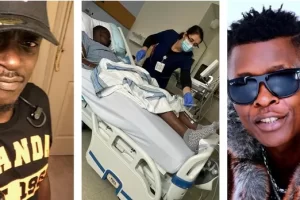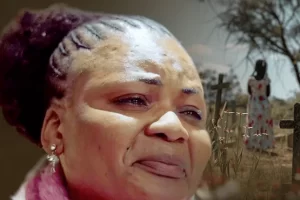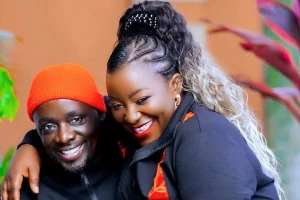For Anne Heyman, the American philanthropist and former Manhattan assistant district attorney who died Jan. 31 in a horse-riding accident in Palm Beach, the burden of those left behind is heavy. In addition to her own three children, Heyman left 750 Rwandan orphans rescued by the Agahozo-Shalom Youth Village (ASYV), which she founded and operated.

Heyman transformed the lives of her charges, children orphaned by the 1994 Rwandan Genocide and left in the care of older siblings, distant relatives or neighbors. Many of the children had reported abuse and conditions of virtual slavery in the homes of guardians. All reported hopelessness. Then came Agahozo-Shalom.
Children lucky enough to be recruited to the village dedicated to drying tears (agahozo) and peace (shalom) joined families of sixteen children headed by a house mother who likely had lost her own children in the genocide. For the first time, the teens reveled in having someone to call “mom.”
The children hung on the shoulders of new-found brothers and sisters. They built community, healed their hearts (the primary goal of their first year), then turned to healing the world through community service. And they went to school. The first graduating class of 2012 sent four students to universities in Canada as Mastercard Scholars and nearly all the rest to universities in Rwanda.
I had the good fortune to visit ASYV three times, seeing the village in its infancy and then as it realized Anne Heyman’s extraordinary vision. I saw young people transformed from victims to actors, children newly enabled with a strength born of community and a shared mission to practice tikkun olam, Hebrew meaning “to heal the world.”
Inspired by Heyman’s work, I stepped in as a volunteer college counselor and worked closely with new graduates. Over and over, I read in the students’ essays about how the village had transformed their lives and how they planned to carry on the mission Heyman had started.
At the beginning, it sounded too good to be true. On my first visit in 2009, students and staff repeatedly referenced Heyman, who seemed to have attained godlike stature at Agahozo. I was skeptical, but I hadn’t yet met her. Still, I left the village smitten with its work. Something new and daring was occurring there.
But it wasn’t entirely new. Learning in 2005 of the desperate state of Rwanda’s orphans (95,000, according to the United Nations), Heyman thought that Israeli expertise as practiced at Yemin Orde, a youth village for Holocaust survivors, could be adapted to Rwandan conditions. Heyman took this germ of an idea and ran with it, fusing Jewish thought and practice with Rwandan tradition, and turning vision into stunning reality.
She brought in Israeli advisers from Yemin Orde and American partners in the American Jewish Joint Distribution Committee to bring the concept to fruition on a mountaintop plot that would allow the children to “see far so that they could go far.”
In 2009, I saw Israelis breaking ground on the mountaintop with the first class of Rwandan students, establishing the farm that would only a few years later provide half of the village’s food needs. I met an Israeli whose sole job was to promote the village philosophy and a Rwandan who had traversed the countryside on foot, regardless of the difficulty his club foot must have presented. They were searching not for the academic stars, but for the most vulnerable children in each district.
I saw the young Rwandan teens sing a cappella and break bread at Sabbath, greeting visitors with “Shabbat Shalom.” I saw a girl who had never celebrated a birthday receive her first birthday cake. And I heard “a big brother,” as the school’s Rwandan counselors were called, expound on the mission to practice tikkun alev (healing hearts) and tikkun olam (repairing the world).
What set ASYV apart from any philanthropic mission I knew is its philosophical core and the uncanny way it helped students internalize those ideas. One example is what the village calls DNA — dialogue, negotiation and agreement. Instead of meeting student transgressions with reprisals or “consequences,” the school dean talked with students, followed by negotiation and agreement to adjust their behavior. Students used to much more aggressive discipline embraced the method and made it their own, with student representatives taking on responsibility for disciplining their peers. One can only imagine the future promise inherent in this approach to problem solving.
By my third visit to ASYV, the full cohort of 500 students were installed, with the first senior class preparing to graduate. This time, I saw Heyman in her element, at home with her children, and quickly understood why she was so revered. She worked tirelessly and moved with a graciousness of spirit that recognized each individual she met, firmly grounded first and foremost by her work and her all consuming drive to nurture her many charges.
Heyman was a visionary, a creator, with an unparalleled dedication to the children of Rwanda and with the grit and determination to make her vision reality. As she changed the lives of so many young Rwandans, she impacted the future of the country, building a cadre of young educated activists intent on sharing the promise they discovered at Agahozo.
As village mother, Heyman never stopped worrying about her charges. Like so many mothers everywhere, her central worry was money — how to sustain a village that served 500 youths a year and that would remain the home of all who graduated.
The world has lost a leading light in Anne Heyman. May the Agahozo- Shalom Youth Village live on in her memory.
Myers is a freelance journalist who has written previously for the Miami Herald and edited world and national news for the San Francisco Chronicle. She spent most of the last year as a volunteer college counseler for Agahozo-Shalom Youth Village graduates.




